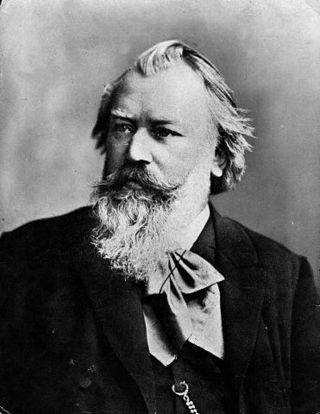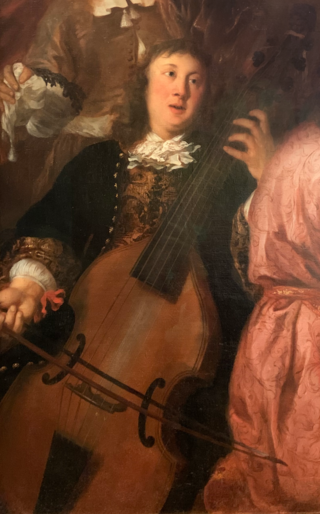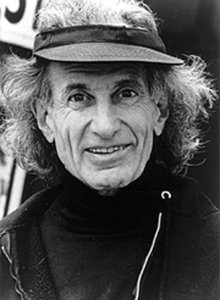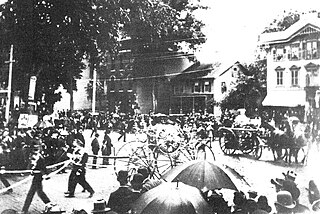
Variations on "America" is a composition for organ by the American composer Charles Ives.

Variations on "America" is a composition for organ by the American composer Charles Ives.
Composed in 1891 when Ives was seventeen, it is an arrangement of a traditional tune, known as "America (My Country, 'Tis of Thee)" (words by Samuel Francis Smith), and was at the time the de facto anthem of the United States. The tune is also widely recognised in Thomas Arne's orchestration as the British National Anthem, "God Save the King", and in the former anthems of Russia ("The Prayer of Russians", from 1816 to 1833), Switzerland ("Rufst du, mein Vaterland", until 1961), and Germany ("Heil dir im Siegerkranz", from 1871 to 1918), as well as being the current national anthem of Liechtenstein ("Oben am jungen Rhein") and the royal anthem of Norway, "Kongesangen".
Ives prepared it for a Fourth of July celebration in 1892 at the Methodist church where he was organist in Brewster, New York. He performed it for the first time on February 17, 1892, and made revisions to the work until 1894. Although the piece is considered challenging even by modern concert organists[ according to whom? ], he spoke of playing the pedal work in the final variation as being "almost as much fun as playing baseball". [1] [2]
It went unpublished until 1949, when the organist E. Power Biggs rediscovered it, and prepared an edition for publication. He incorporated it into his repertoire, and it became a regularly performed piece by American organists. In 1962 it was orchestrated by William Schuman, and premiered in this version by the New York Philharmonic under Andre Kostelanetz in 1964. The Schuman orchestration formed the basis of a wind band version by William E. Rhoads, published in 1968. [3]
The interludes are Ives's first notated use of bitonality: the first combines F major for the right hand and D-flat major for the left hand and pedals, whilst the second combines A-flat major and F major.
Ives' biographer Jan Swafford notes that whilst it might be tempting to hear Variations on "America" as a satire, the probability is that Ives meant the work as a sincere exercise in variations for organ. He adds that whilst Ives was capable of musical jokes, they are usually considerably broader than here. [4] Ives was not deaf to its comic potential however: he later noted that his father "didn't let me do it much, as it made the boys laugh" in church. [5]
Recordings of Ives' original piece have been made by several organists, including E. Power Biggs (CBS) and Simon Preston (Argo). Recordings of Schuman's orchestration have included performances conducted by Eugene Ormandy, (CBS/Sony), Morton Gould (RCA), Arthur Fiedler (Decca) and José Serebrier (Naxos).

Johannes Brahms was a German composer, pianist, and conductor of the mid-Romantic period. Born in Hamburg into a Lutheran family, he spent much of his professional life in Vienna. He is sometimes grouped with Johann Sebastian Bach and Ludwig van Beethoven as one of the "Three Bs" of music, a comment originally made by the nineteenth-century conductor Hans von Bülow.

Charles Edward Ives was an American modernist composer, one of the first American composers of international renown. His music was largely ignored during his early career, and many of his works went unperformed for many years. Later in life, the quality of his music was publicly recognized through the efforts of contemporaries like Henry Cowell and Lou Harrison, and he came to be regarded as an "American original". He was also among the first composers to engage in a systematic program of experimental music, with musical techniques including polytonality, polyrhythm, tone clusters, aleatory elements, and quarter tones. His experimentation foreshadowed many musical innovations that were later more widely adopted during the 20th century. Hence, he is often regarded as the leading American composer of art music of the 20th century.

Dieterich Buxtehude was a Danish organist and composer of the Baroque period, whose works are typical of the North German organ school. As a composer who worked in various vocal and instrumental idioms, Buxtehude's style greatly influenced other composers, such as Johann Sebastian Bach. Buxtehude is considered one of the most important composers of the 17th century.

"My Country, 'Tis of Thee", also known as simply "America", is an American patriotic song, the lyrics of which were written by Samuel Francis Smith. The song served as one of the de facto national anthems of the United States before the adoption of "The Star-Spangled Banner" as the official U.S. national anthem in 1931. The melody used is the same as that of the national anthem of the United Kingdom, "God Save the King".

Henry Dreyfuss Brant was a Canadian-born American composer. An expert orchestrator with a flair for experimentation, many of Brant's works featured spatialization techniques.

The Toccata and Fugue in D minor, BWV 565, is a piece of organ music written, according to its oldest extant sources, by Johann Sebastian Bach (1685–1750). The piece opens with a toccata section, followed by a fugue that ends in a coda. Scholars differ as to when it was composed. It could have been as early as c. 1704. Alternatively, a date as late as the 1750s has been suggested. To a large extent, the piece conforms to the characteristics deemed typical of the north German organ school of the Baroque era with divergent stylistic influences, such as south German characteristics.

Edward George Power Biggs was a British-born American concert organist and recording artist.

Charles Wood was an Irish composer and teacher; his students included Ralph Vaughan Williams at Cambridge and Herbert Howells at the Royal College of Music. He is primarily remembered and performed as an Anglican church music composer, but he also wrote songs and chamber music, particularly for string quartet.

James Healey Willan was an Anglo-Canadian organist and composer. He composed more than 800 works including operas, symphonies, chamber music, a concerto, and pieces for band, orchestra, organ, and piano. He is best known for his church music.

Passacaglia and Fugue in C minor is an organ piece by Johann Sebastian Bach. Presumably composed early in Bach's career, it is one of his most important and well-known works, and an important influence on 19th and 20th century passacaglias: Robert Schumann described the variations of the passacaglia as "intertwined so ingeniously that one can never cease to be amazed."
String Quartet No. 1 is a musical composition by Charles Ives. Music historian and theorist Robert P. Morgan wrote that the quartet "was Ives's first mature composition of extended length, and its extraordinary fluency gives ample evidence of his solid control of traditional musical techniques. Moreover, the work is considerably more than a facile exercise based on classical models; there are already indications of the Ives to come, in the extensive quotations and, above all, in the composer's ability to bend the form to suit the idiosyncrasies of his own musical inclinations."
David John Briggs is an English organist and composer.

The Sonata in G major, Op. 28 is Edward Elgar's only sonata composed for the organ and was first performed on 8 July 1895. It also exists in arrangements for full orchestra made after Elgar's death.

A Symphony: New England Holidays, also known as A New England Holiday Symphony or simply a Holiday Symphony, is a composition for orchestra written by Charles Ives. It took Ives from 1897 to 1913 to complete all four movements. The four movements in order are:
Psalm 90 is a musical composition by the American composer and insurance executive Charles Ives, written in 1923–24.
Orchestral Set No. 2 is the title of a three-movement work by the American composer Charles Ives. A typical performance lasts around seventeen minutes.

Stephen J. Tharp is an American organist and composer.
The Boléro de concert, Op. 166, is a composition for harmonium or organ without pedal by Alfred Lefébure-Wély. It was first published in 1865. The composition was adapted for wind instruments.

The Gong on the Hook and Ladder or Firemen's Parade on Main Street, normally shortened as The Gong on the Hook and Ladder and also initially entitled Allegro moderato, is a short composition by American composer Charles Ives.
As a precocious teenaged organist, Ives composed a set of variations on "My Country, 'Tis of Thee," and he said his concluding burst of fancy footowrk on the organ pedals was "almost as much fun as playing baseball."